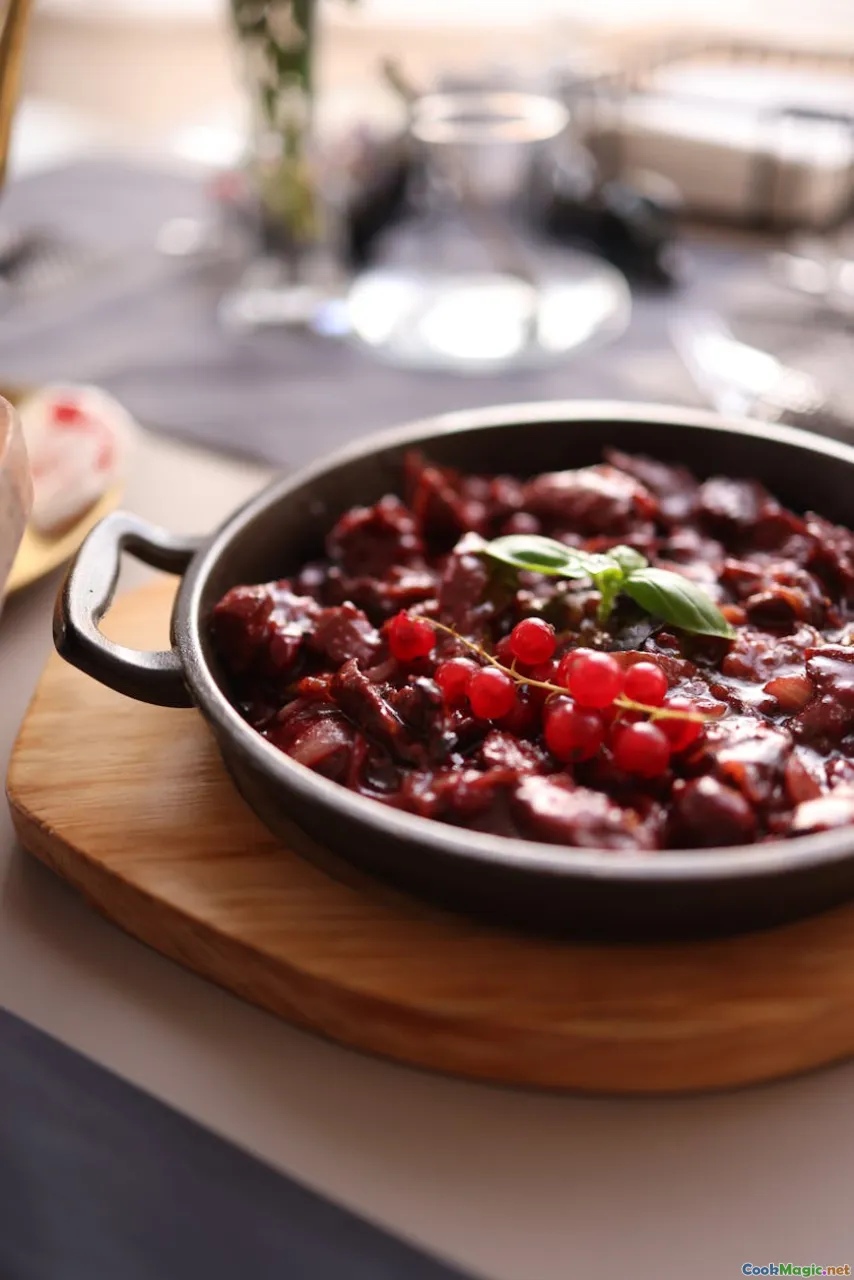Fumbwa Stew Exploring Traditional Leaf Dishes
8 min read Discover the rich flavors, cultural significance, and culinary artistry behind Fumbwa stew, a beloved Congolese leaf-based dish rooted in tradition and community. May 20, 2025 06:00
Fumbwa Stew: Exploring Traditional Leaf Dishes
Imagine a bustling market in Brazzaville, where the air is thick with the aroma of sizzling spices, fresh greens, and the vibrant hum of daily life. Amidst this lively scene, a humble yet profoundly flavorful dish emerges—Fumbwa stew, a quintessential Congolese delicacy that celebrates the bounty of nature through its use of local leafy greens. This dish is more than just sustenance; it is a tapestry of history, culture, community, and identity woven into every spoonful.
The Heart of Congolese Cuisine: A Deep Dive into Fumbwa
Origins and Cultural Significance
Fumbwa, also known as mushroom bush or wild spinach, is a traditional staple in the Democratic Republic of Congo and the Republic of Congo. Its roots trace back centuries, deeply intertwined with the daily lives and spiritual practices of local communities. In many Congolese villages, preparing Fumbwa is a communal activity—a ritual that brings families together, passing down culinary wisdom from generation to generation.
Historically, Fumbwa was valued not only for its nutritional content but also for its medicinal properties. Indigenous healers believed that the greens possessed healing qualities, helping to cure ailments and boost vitality. Its significance extends beyond the kitchen; it embodies resilience, community, and the harmonious relationship between people and nature.
The Botanical Marvel
Botanically, Fumbwa is derived from the Gnetum genus, a group of evergreen climbing plants abundant in Central Africa. The leaves are elongated, dark green, and glossy, with a tender yet slightly chewy texture that makes them perfect for stews. When cooked, they retain a vibrant color and develop a rich, earthy flavor that forms the backbone of the dish.
Cultural Variations and Names
Different regions and ethnic groups have their own variations and names for Fumbwa. In some areas, it's called Mushroom Bushdue to its mushroom-like appearance, while others refer to it simply asgreen bush leaves. Regardless of the name, the preparation and significance remain remarkably consistent.
The Art of Preparing Fumbwa Stew
Ingredients and Their Stories
Creating an authentic Fumbwa stew is an art that combines fresh ingredients, traditional techniques, and personal touch.
- Fumbwa (Gnetum leaves): The star ingredient, often sourced fresh from local markets or foraged from nearby forests.
- Palm oil: Deep, red, aromatic oil that adds richness and a characteristic flavor.
- Smoked fish or dried shrimp: For umami depth; these ingredients connect the dish to coastal and riverine culinary traditions.
- Tomatoes and onions: The aromatic base that forms the foundation of the stew.
- Peppers (hot or mild): For heat and vibrancy.
- Banana or plantain: Sometimes added for a starchy accompaniment.
- Seasonings: Salt, garlic, and sometimes local herbs like basil or scent leaves.
Step-by-Step Preparation
- Cleaning the Leaves: Gnetum leaves are rinsed thoroughly to remove any dirt or impurities. Because they're often foraged, this step is crucial.
- Preparing the Base: Sauté onions, garlic, and chopped tomatoes in palm oil until fragrant and slightly caramelized.
- Adding Proteins: Incorporate smoked fish or dried shrimp, allowing them to infuse the oil with smoky, savory notes.
- Incorporating Fumbwa: Add the leaves to the pot, stirring carefully to coat them with the aromatic mixture. They will wilt quickly, releasing a rich, green hue.
- Simmering: Cover and cook on low heat, allowing the flavors to meld and the leaves to soften, about 20-30 minutes.
- Final Touches: Season with salt and peppers, and optionally add slices of plantain or bananas for a sweet contrast.
Serving and Accompaniments
Fumbwa stew is traditionally served hot, accompanied by fufu, cassava, or manioc. It’s often enjoyed with a side of boiled plantains or rice, making for a hearty, satisfying meal. The dish’s vibrant green color and fragrant aroma make it a visual and olfactory delight.
Sensory Experience: Taste, Aroma, and Texture
When you take your first spoonful of Fumbwa stew, your senses are immediately engaged. The taste is complex—earthy and slightly bitter from the greens, balanced by the smoky depth of dried fish and the richness of palm oil. The aroma is intoxicating, a blend of roasted spices, fresh greens, and a hint of the river's bounty.
The texture is a delightful contrast: the tender, slightly chewy leaves against the silky sauce, with occasional bites of smoky fish adding a hearty element. The warmth and spice linger, making each mouthful a comforting embrace.
Personal Reflections and Cultural Insights
Having traveled through Congo’s lush landscapes and shared countless meals with local families, I’ve come to see Fumbwa not just as food but as a symbol of resilience and community. Each pot tells a story—of survival, adaptation, and reverence for nature.
One memorable experience was participating in a traditional Fumbwa cooking festival in a small village near the Congo River. The air was thick with anticipation; elders shared stories as they prepared the greens, passing down secret techniques. The communal effort transformed ingredients into a celebration of life.
This dish also exemplifies sustainability. Foraged greens and preserved proteins reflect a deep respect for local resources, encouraging us to think differently about our food systems.
Final Thoughts
Fumbwa stew encapsulates the essence of Congolese culinary tradition—simple ingredients, profound flavors, and a deep connection to cultural identity. It reminds us that food is more than nourishment; it is history, community, and spirit, all simmered together.
Next time you encounter leafy greens in your market or garden, consider exploring their potential beyond salads. With a little imagination and respect for tradition, you might discover your own version of this beloved dish, bringing a piece of Congo’s vibrant culture to your table.









